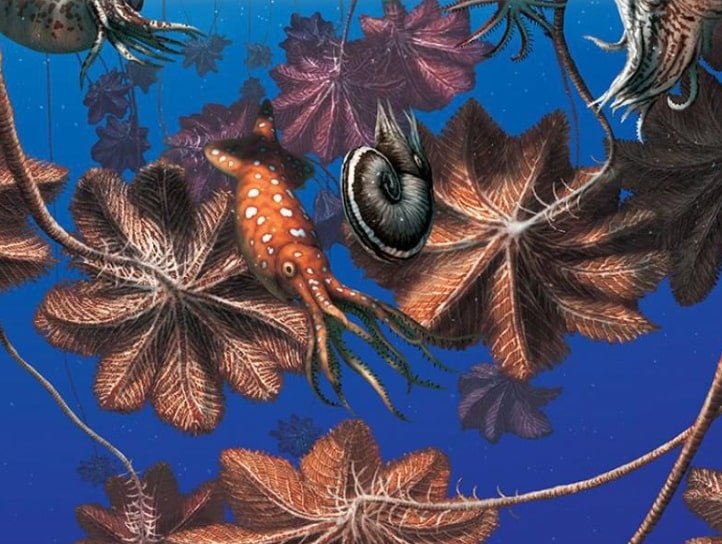
Ancient Sea Life May Have Hitched Across Oceans on Giant Living Rafts
by Raleigh McIlvery, Hakai Magazine, Smithsonian.com
Today’s oceans are jammed with plastic, which not only pollutes the water and poisons its inhabitants but also carries some animals to distant destinations. As researchers rush to discern the imminent repercussions of these virtually indestructible plastic rafts on global ecosystems, others are turning to the past to explore whether this buoyant lifestyle is actually new. The subject of their study? A giant of the Jurassic era: the crinoid.
Crinoids look more like plants than animals, but they are invertebrates related to sea stars and sea urchins. With floweresque crowns atop stems reaching 26 meters in length, crinoids living in the Jurassic were one of the world’s largest known invertebrates. In warm prehistoric seas, a subset of these behemoths used their anchor-like stems to grip floating logs and surf in colonies hundreds strong. And with them, life may have spread far and wide.
For marine and terrestrial organisms alike, rafting may be a key dispersal mechanism. In fact, rafting may have been one way islands like New Zealand were initially colonized by some organisms.

Carol graduated from Riverside White Cross School of Nursing in Columbus, Ohio and received her diploma as a registered nurse. She attended Bowling Green State University where she received a Bachelor of Arts Degree in History and Literature. She attended the University of Toledo, College of Nursing, and received a Master’s of Nursing Science Degree as an Educator.
She has traveled extensively, is a photographer, and writes on medical issues. Carol has three children RJ, Katherine, and Stephen – one daughter-in-law; Katie – two granddaughters; Isabella Marianna and Zoe Olivia – and one grandson, Alexander Paul. She also shares her life with her husband Gordon Duff, many cats, and two rescues.
ATTENTION READERS
We See The World From All Sides and Want YOU To Be Fully InformedIn fact, intentional disinformation is a disgraceful scourge in media today. So to assuage any possible errant incorrect information posted herein, we strongly encourage you to seek corroboration from other non-VT sources before forming an educated opinion.
About VT - Policies & Disclosures - Comment Policy




No wonder more discoveries will follow and reveal the story behind the vast under ocean and even the frozen poles.
If you are in Limestone country you can always find Echinodermata. Facinating fossils and
as previously stated, pelagic in deposition, you find them everywhere.I once found five different phylum in the same quarry stone, North of Baltimore. Further West the Helderburg group is a Crinoid paradise. Don’t mind the cows.
Comments are closed.